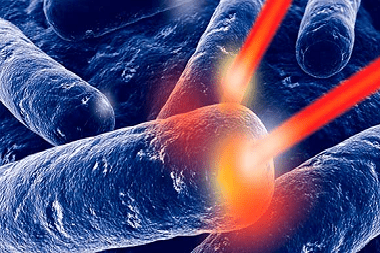Medical procedures >>>> Photodynamic therapy - application possibilities
Photodynamic therapy - application possibilities.

Photodynamic therapy is a minimally invasive method of treating diseases in the field of dermatology, ophthalmology, oncology, dentistry and other branches of medicine. It uses a beam of light of a certain wavelength as a source of exposure to photosensitizing substances injected into the lesion.
At the beginning, photodynamic therapy was used to affect the skin and superficial subcutaneous layers, mucous and submucosal layers. But in the process of developing technologies in photosensitizing therapy, it became possible to affect the deeper tissues of the body.
The methods of administration of a photosensitive substance (photosensitizer) are different: through the mouth (orally), intravenously, in the form of applications (on the surface of the skin or mucous membrane). Photosensitizer plus luminous flux act at the cellular level on the pathological process (or pathological formation) and destroy it in a physicochemical way.
The use of the method in oncology is gaining momentum, since studies have shown that the photosensitizer tends to selectively accumulate in tumor cells, which localizes the effect on tissues without involving nearby cells.
There are contraindications to photodynamic therapy:
- Deep layers of tissue are inaccessible for exposure to a ray of light,
- Hypersensitivity to light may temporarily develop,
- After the procedure, the patient is advised to avoid the open sun for a while.
The advantages of the method of photodynamic therapy are that they have no age restrictions; suggest both inpatient and outpatient treatment; do not leave injuries; simultaneously diagnose the area of influence.

Read

Read



























